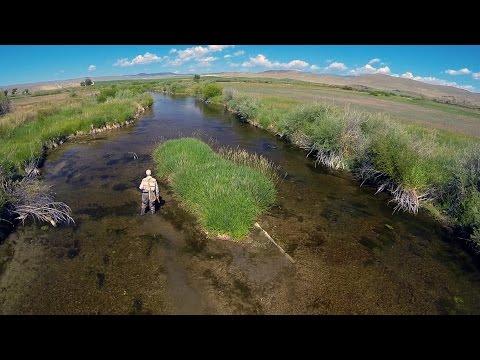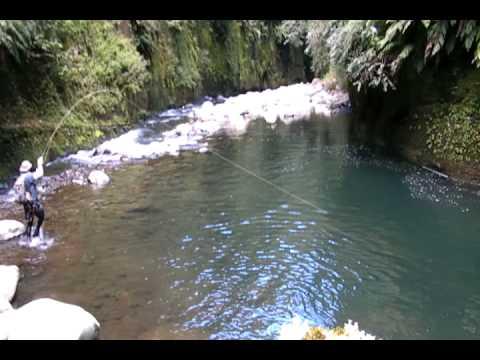(28 Jun 2018) LEADIN:
Wineries worldwide are confronting climate change as warming temperatures push viticulture further north.
Vinyards in some of the world's warmer regions are being abandoned while winemakers are now able to grow grapes in places as far north as Nova Scotia. In the American West, vintners in Oregon and California are creating new wine-growing regions in areas known for their cooling coastal breezes and are changing some farming practices.
STORYLINE:
This winery in Oregon's Willamette Valley has been growing pinot noir grapes for decades, helping build the region's reputation for award-winning wines from fruit that favours cooler conditions.
But vintners here - and around the world - are now grappling with the impact of a warming planet and what it means for their wines in an industry where just a few degrees can make a big difference.
Christine Collier Clair remembers the moment she realised climate change was something her vineyard needed to take seriously.
"Probably in the 2015 vintage. That vintage we started harvesting on August 28th and I have never been part of a harvest that was in August before," she says.
"And in fact, as an Oregonian, usually we can be pretty lackadaisical into …I've done harvests where they didn't start until October. And so, to be that caught off guard with that warm of a growing season was really kind of the 'ah ha' moment that this is serious and happening."
Willamette Valley vineyards is now grafting different root stocks onto vines to produce more heat-tolerant plants, pruning to better shade grape clusters and buying land at higher elevations.
Other Oregon winemakers are using the wind to hedge their bets, planting where coastal breezes mitigate the warming climate.
Greg jones is an expert on how climate change is affecting the global wine industry.
He says global warming is changing the playing field for wine lovers.
"I recently spoke at the International Cool Climate Conference in England, and we're seeing places all further north than they've ever been," he says.
"It used to be thought that the 50-degree parallel was the limit of viticulture worldwide and now we're seeing vineyards planted up to 57 degrees in parts of Scandinavia, Nova Scotia, parts of Canada, up in British Columbia."
From South Africa's drought-stricken vineyards, to France's noble chateaus, to sunny vineyards in Australia and California, growers and winemakers say they are seeing the effects of climate change as temperatures rise, with swings in weather patterns becoming more severe.
In Great Britain, climate change has uncorked production of Pinot Noir and Chardonnay.
In California, a newly designated wine-growing region called Petaluma Gap is taking advantage of cooling breezes, firmly rooting the business in new areas of an already wine-rich state.
"Clearly, we can't move the vineyards once they're planted, so we have to adapt to the changes that we're seeing," says Ana Keller, estate manager at Keller Vineyards.
"We can look for ways to shade the fruit, so the fruit stays cooler. We can also make sure that the vines have the nutrients, something that we would have done regardless of where we were. But we have to be very mindful that the farming techniques have to change."
Adaptation that's full of intoxicating possibilities for some and sobering realties for others, as temperatures continue to rise.
Find out more about AP Archive: http://www.aparchive.com/HowWeWork
Twitter: https://twitter.com/AP_Archive
Facebook: https://www.facebook.com/APArchives
Google+: https://plus.google.com/b/102011028589719587178/+APArchive
Tumblr: https://aparchives.tumblr.com/
Instagram: https://www.instagram.com/APNews/
You can license this story through AP Archive: http://www.aparchive.com/metadata/youtube/f2960a75782b1088a4d9c02a4fb80183
Wineries worldwide are confronting climate change as warming temperatures push viticulture further north.
Vinyards in some of the world's warmer regions are being abandoned while winemakers are now able to grow grapes in places as far north as Nova Scotia. In the American West, vintners in Oregon and California are creating new wine-growing regions in areas known for their cooling coastal breezes and are changing some farming practices.
STORYLINE:
This winery in Oregon's Willamette Valley has been growing pinot noir grapes for decades, helping build the region's reputation for award-winning wines from fruit that favours cooler conditions.
But vintners here - and around the world - are now grappling with the impact of a warming planet and what it means for their wines in an industry where just a few degrees can make a big difference.
Christine Collier Clair remembers the moment she realised climate change was something her vineyard needed to take seriously.
"Probably in the 2015 vintage. That vintage we started harvesting on August 28th and I have never been part of a harvest that was in August before," she says.
"And in fact, as an Oregonian, usually we can be pretty lackadaisical into …I've done harvests where they didn't start until October. And so, to be that caught off guard with that warm of a growing season was really kind of the 'ah ha' moment that this is serious and happening."
Willamette Valley vineyards is now grafting different root stocks onto vines to produce more heat-tolerant plants, pruning to better shade grape clusters and buying land at higher elevations.
Other Oregon winemakers are using the wind to hedge their bets, planting where coastal breezes mitigate the warming climate.
Greg jones is an expert on how climate change is affecting the global wine industry.
He says global warming is changing the playing field for wine lovers.
"I recently spoke at the International Cool Climate Conference in England, and we're seeing places all further north than they've ever been," he says.
"It used to be thought that the 50-degree parallel was the limit of viticulture worldwide and now we're seeing vineyards planted up to 57 degrees in parts of Scandinavia, Nova Scotia, parts of Canada, up in British Columbia."
From South Africa's drought-stricken vineyards, to France's noble chateaus, to sunny vineyards in Australia and California, growers and winemakers say they are seeing the effects of climate change as temperatures rise, with swings in weather patterns becoming more severe.
In Great Britain, climate change has uncorked production of Pinot Noir and Chardonnay.
In California, a newly designated wine-growing region called Petaluma Gap is taking advantage of cooling breezes, firmly rooting the business in new areas of an already wine-rich state.
"Clearly, we can't move the vineyards once they're planted, so we have to adapt to the changes that we're seeing," says Ana Keller, estate manager at Keller Vineyards.
"We can look for ways to shade the fruit, so the fruit stays cooler. We can also make sure that the vines have the nutrients, something that we would have done regardless of where we were. But we have to be very mindful that the farming techniques have to change."
Adaptation that's full of intoxicating possibilities for some and sobering realties for others, as temperatures continue to rise.
Find out more about AP Archive: http://www.aparchive.com/HowWeWork
Twitter: https://twitter.com/AP_Archive
Facebook: https://www.facebook.com/APArchives
Google+: https://plus.google.com/b/102011028589719587178/+APArchive
Tumblr: https://aparchives.tumblr.com/
Instagram: https://www.instagram.com/APNews/
You can license this story through AP Archive: http://www.aparchive.com/metadata/youtube/f2960a75782b1088a4d9c02a4fb80183
- Category
- Fly Fishing




